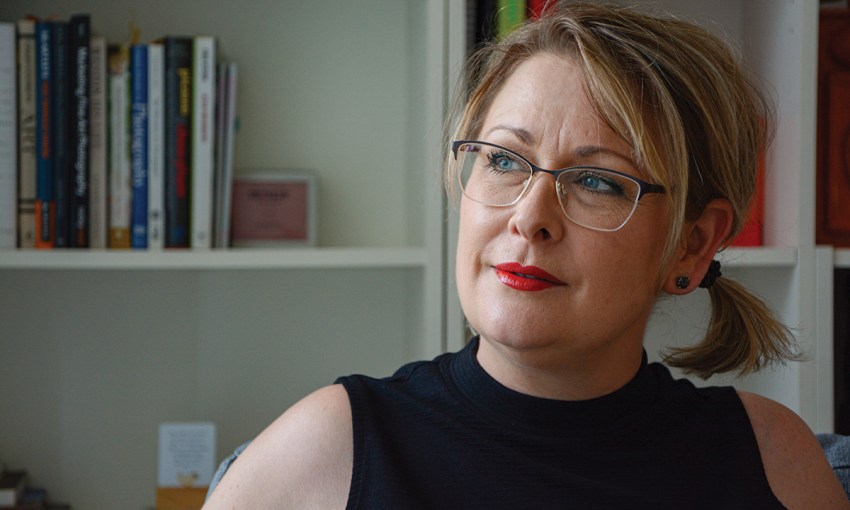At their lowest point, women walk into Catherine House for a little bit of support and they often end up walking out with their lives changed.
Catherine House: With open arms
The courtyard at Catherine House has a tranquillity that belies its inner-city location.
If you raise your eyes in just the right direction, there’s a peek of Adelaide’s multi-storeys, but they’re quite easy to ignore.
The rustle of the well-tended greenery and music trickling from speakers are the only sounds; it’s exactly the kind of space you want to retreat to when you need to clear your head.
To the women living in the nearby crisis accommodation, this space – and all the others at Catherine House – is a lifeline to reset and re-evaluate while they take control of their future.
As Jaylee Cooper, manager of fundraising, events and marketing, gives SALIFE a rare glimpse inside Catherine House, she speaks about the life-changing services they offer for women experiencing homelessness.
South Australia’s homelessness sector was rocked in late April by the re-tender of most of the inner-city homeless service contracts. The new Toward Home Alliance was selected as the successful tenderer.
Not being part of the alliance, Catherine House lost more than $1 million in funding for their crisis accommodation service, accounting for a third of its core funding. For the team at Catherine House, the show must go on, and this means rallying the community to help with their shortfall.
Toward Home has given Catherine House three months of funding, which ran out at the end of September 2021, and they’re in talks with the state government for extra assistance.
In 1988, Catherine House was born out of necessity for a women’s-only homelessness service – there were shelters for men and for women and children, but none for unaccompanied women. The service is critical, with 44 per cent of people experiencing homelessness being women.
“Those women would go to men’s shelters, and that wasn’t ideal given a lot of them were coming from a domestic violence or sexual violence background,” Jaylee says.
“A lot of the women were living at the West Terrace Cemetery.”
The service started with 12 beds in single-room accommodation, which was rare in those days. Nowadays, they can take up to 20 women in emergency accommodation and 59 across all of Catherine House – that includes off-site cottages as the women are transitioning back into unassisted living.
Catherine House offers a recovery program to support women with mental health challenges, allowing them more time with a case worker. “Women who stay in that program, rather than presenting to the public health system for support, can actually be supported by Catherine House. We can work with them one-on-one to not only try to prevent that scenario, but look at all aspects of their life.
“That’s the biggest thing that I see Catherine House is doing so well – our holistic approach. We understand women are not going to come to us for three months and be ‘fixed’. It’s about starting their journey of ending their homelessness for good. There might be some women who can come for three months and start to get back on their feet, but I’d say the majority of women who come to Catherine House have complex needs and often a background of trauma.”
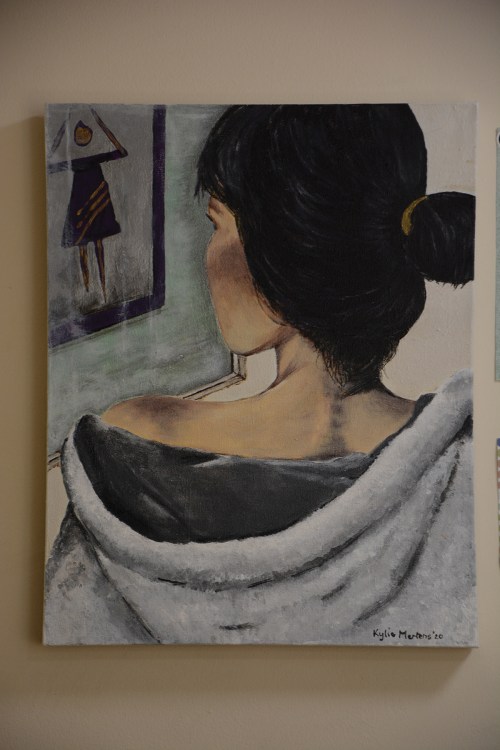
Faces of homelessness
When SALIFE meets her at home, Tess opens the door with a warm smile. She sits at her dining table in an immaculate space that exudes warmth and personality, just like Tess herself. She begins by talking about her schooling at Mercedes College and growing up in Aldgate as part of an arty middle-class family.
“Looking back on my life, it’s very clear to see that I had bipolar, but we didn’t know that then,” Tess says.
After a move to Queensland, she was diagnosed with anxiety and depression, and lived through decades bouncing between triumphant achievements and the low of breakdowns.
The first one came when she was 23, along with Tess’s first time being homeless.
“I was suicidal and ended up in an incredible rehab in Burleigh Heads. I spent 10 months there and it completely changed my life,” she says.
While in rehab, Tess discovered photography and, with a natural eye, her career took off very quickly. She worked in many areas of the field, including medical photography in a hospital and also owned a commercial gallery here in SA.
“I’d had this amazing 10 years of productivity; winning awards. But I became unbalanced and started drinking, which I hadn’t done for more than a decade.”
After the breakdown of her second marriage, she spiralled further while working as a seasonal academic at the Queensland University of Technology. Tess became more depressed and more dysfunctional, ultimately finding some kind of solace in the use of methamphetamines.
“Slowly but surely, I became an addict. I distanced myself from all of my family and I’d been cut off financially; I had no health insurance, no phone, no care and nowhere to go,” she says.
Coming back to SA, Tess felt hopeless. “I never thought I’d get better again. I couldn’t see a way through and that’s when I found out about Catherine House.
“I called and they were full but they said they would keep in touch and within a few weeks, I got in.”
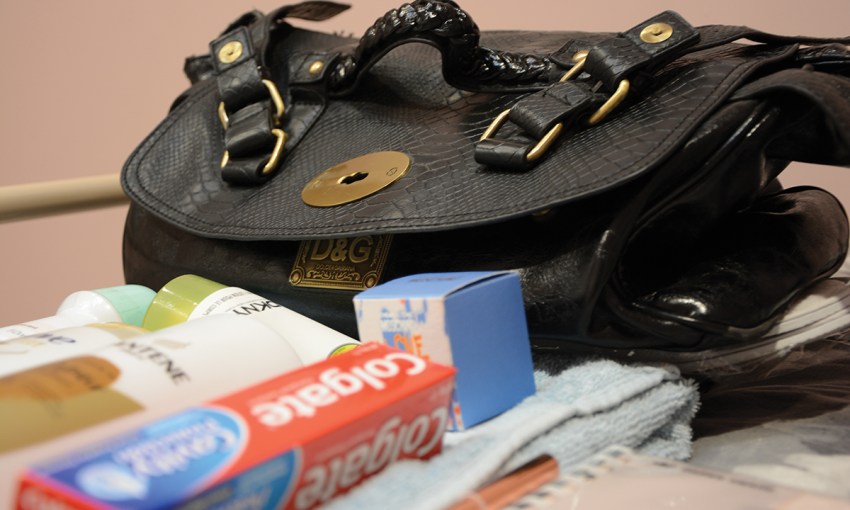
Slowly, all of the seemingly unfixable problems that had been plaguing Tess were detangled and addressed.
“There’s something very, very special about Catherine House. I think because every woman there has been through the wringer and been through one crisis or another, it’s like we’re kindred spirits and there’s lots of support and love for each other.
“You actually have time and space to get your head back together while learning all these tools. If there’s a relapse, you’re in a loving, supportive environment with people telling you that you can do it.”
Tess is now studying filmmaking, with a goal to make films that give a voice to women.
People are always surprised to hear what Tess has been through and she’s often told she doesn’t look like a homeless woman. “I say, ‘I’m not, but I was, and when I was, I looked exactly the same as I do now.’”
It’s this discussion around what homelessness looks like that Tess wants to start. “It can happen to anyone. All my life I’ve earnt good money. I hate how the homeless are thought of as feeble, weak people.”
It’s a sentiment Jaylee can relate to, having learnt the lesson on her second day with Catherine House. Jaylee remembers sitting in the outside office area when a woman came in to sign in.
“She was probably in her late 50s, and she was beautifully dressed and very well spoken. I thought she was one of the GPs or board members. I had this complete judgement of how she spoke and how she looked.
“I asked the receptionist who she was and she said, ‘That’s Felicity; one of our clients’.
“I had this pre-conception of what a person experiencing homelessness would look like. It was such a wake-up call for me. It’s unfortunate because what people see on the street is such a tiny snippet.”
Rough-sleepers only account for seven per cent of all people experiencing homelessness, and rather than sleep on the street, women are most likely to stay on friends’ couches, in their car, or stay in unsafe relationships.
“We see women from all backgrounds, ages, suburbs – really all walks of life including professional women such as doctors or lawyers – because all it takes sometimes is one big thing in their life to happen, and then homelessness spirals.”

Life and learning
Catherine House is much more than a bed and a hot meal for the women who step through its doors.
When 27-year-old Clara was just 21, she was referred to Catherine House after being hospitalised for mental health reasons and not having stable or safe housing.
“I’ve always said Catherine House is the place I learnt to grow up,” Clara says. Living in country SA, looking after her three younger sisters, Clara says she never really gained the life skills to look after herself properly.
Clara was accepted into a nursing and health sciences degree but didn’t have the opportunity to move to Adelaide, so she deferred. She moved between homes after school and was hesitant to move back to her hometown and re-establish the cycle of responsibility for her siblings.
Clara found herself in a really busy home environment, not knowing how to look after herself properly and the PTSD, depression, anxiety and self-harm began. With nowhere to live, she was referred to Catherine House.
“It was daunting,” Clara says. “You’re coming to terms with a harsh reality of what’s happening.”
Clara was dealing with being homeless, adjusting to a strange environment and working through her mental illness, but she still used much of her time at Catherine House to undertake study.
On site, the Catherine House Women’s Centre is a place for current and past clients to meet, socialise and get involved in activities. They’re always given what staff call a “gentle push” in its direction, and while the idea of being around so many other women at such a raw time in their lives is difficult, the rewards reaped are always worth it.
The centre helped build Clara’s confidence and study became part of daily life. “I did a placement for uni while I was in the Crisis Program and everyone was super supportive, even packing me nice lunches.”
While she was in the Recovery Program, Clara was focused on her Bachelor of Social Work and concentrating on her mental health, then when she moved into the Transitional Housing Program, it became about developing the life skills she was never taught.
“This is where I developed my living skills, learnt how to budget and maintain a household, as well as caring for myself.”
Clara kept on top of study while at Catherine House, winning their Kim Adey scholarship worth $10,000.
She moved out of Catherine House in 2018 and now lives in community housing, working as a social worker and supporting people who need help just like she did.
“There are still a lot of challenges, but they are achievable compared to everything that has happened. It’s easier to figure out what to do, where to go and how to get support. I learnt those things from Catherine House and I’m still implementing them.”
Part of Clara’s healing included the removal of scars that puckered her wrist in a reminder of attempts at her own life. She was able to heal from this painful part of her life with the help of Adelaide Plastic Surgery, who offer pro-bono work for women at Catherine House. They work on anything from scars and tattoo removal, to fixing noses broken in domestic violence incidents.
“Going through the Recovery Program, there was a certain point that I knew I was ready to start a fresh new chapter.”
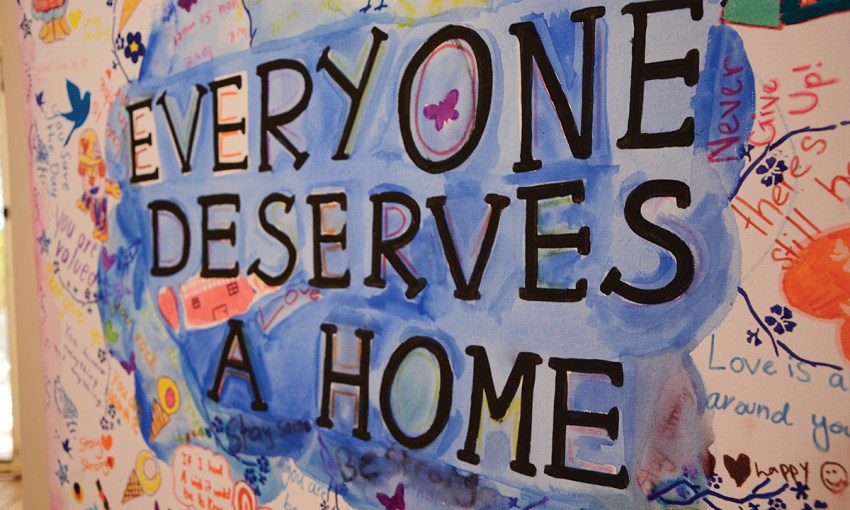
On the line
The first reassuring voice women hear when they reach out to Catherine House for help is intake worker Lois. Women are distressed when they make that call, so Lois brings them back to the simple things, such as what they can feel and smell.
“When I got into social work, I decided I was always going to be the one kind voice in their day, because they go through so much,” Lois says.
Some days, Lois will get up to 25 calls for help. With so much demand, the current wait time for accommodation is about two to three months, with 25 to 30 women on the waiting list at any given time. But the hard work and distressing conversations are made worth it when Lois can tell women they’ve got a place at Catherine House.
“I look around me and think this is a great place. When I’m telling the women on the phone they are safe here, I actually mean it.”
When SALIFE meets client Kristina, she’s only been in Catherine House for a few months, but it’s clear she’s already flourishing.
The 37-year-old, who was working in aged care when she became homeless, had resorted to sleeping in her car after arguments at home escalated.
“I’d go to Anglicare every day and beg them for help and was going to doctors too,” Kristina says.
“I was eating badly, drinking too much coffee, using public bathrooms but not showering. I felt like a leper. I was burning all my energy trying to be alert and not sleeping property.”
After reaching out for help so many times, Kristina began to lose trust in the organisations she was relying on. However, after a stay in hospital, she was referred to Catherine House.
“Lois was really amazing. I was terrified when I first got there. I asked to have my dinner in my room and they said I could on the first night, but they really encourage you to come and eat with the other women.”
And after feeling so let down, she felt supported for the first time, as she entered her new room holding a typical Catherine House welcome pack containing donations from the community, including a handbag, toiletries, new underwear and sleepwear.
Through a fund that supports clients’ wellbeing, Kristina was able to get a gym membership and focus on her mental and physical health.
“For people to do this for me when I’m in the most vulnerable situation I’ll ever be in in my life, it makes you feel very valued and it takes a little while for that to sink in. It really builds your confidence.
“And the staff will stop what they’re doing for 20, 40 minutes and drill into you that you’re important and that you deserve this,” Kristina says.
“They’ll spend as long as it takes for you to walk away with a smile on your face.”
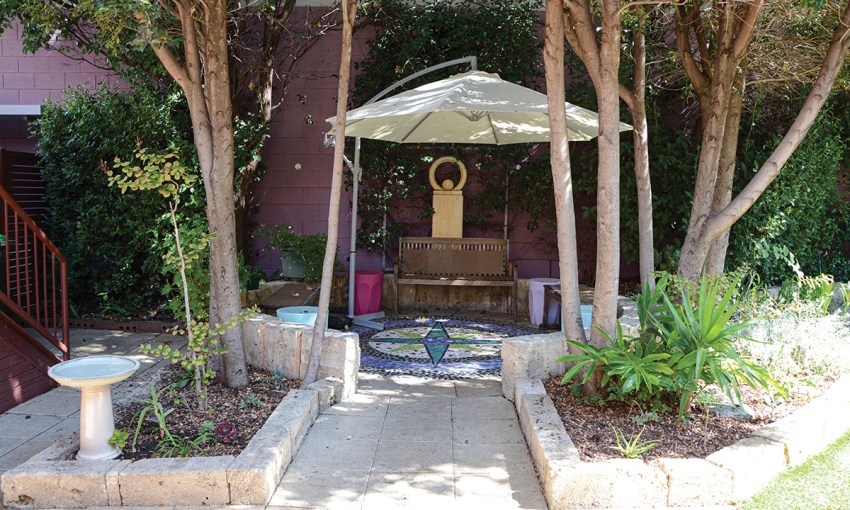
This article first appeared in the September 2021 issue of SALIFE magazine.



